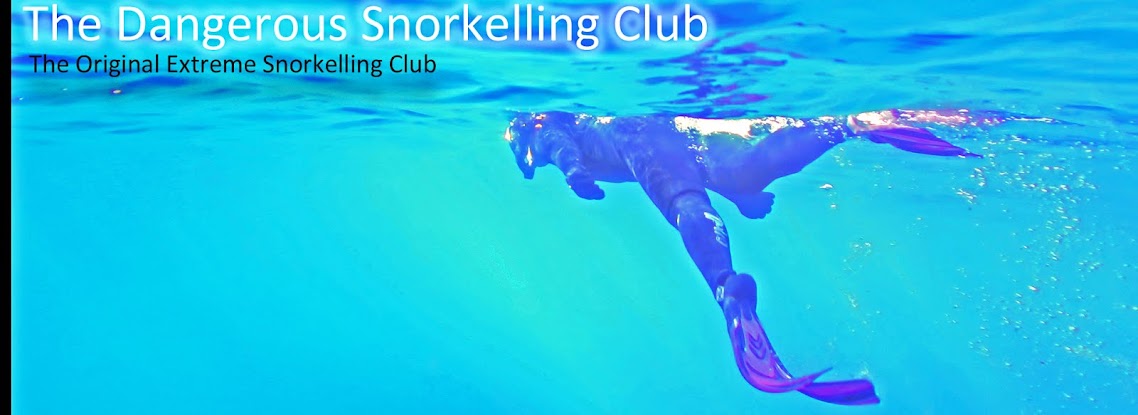Scilly Isles 2016 - Part Two
 |
| The Garrison Wall |
The
sky is leaden grey. Wind whips at our backs and rain lashes our faces
as we begin the climb from the capital, Hugh Town, to the entrance of
the Garrison, a huge coastal fortification that has defended the
Island of St Mary's since 1588. They say that in England you can
experience all four seasons in a single day. In the Scilly Isles you
can experience all four seasons in a single hour. By the time we've
completed the short, steep journey, the wind has dropped
considerably in strength. A few minutes ago it felt like walking
through a raging gale, now it feels like a fat asthmatic was coughing
in our general direction. Entering through the ancient castle gates
the weather takes another sudden change. The cloud begins to break
and soon streaks of bright blue scar the once solid grey sky.
Wetsuits
slung over our shoulders and fins dangling in hand we make our way
along the historical garrison wall much to the bemusement of local
and tourist alike. No doubt some think we're lost, others that we're
mad and maybe some think we're drunk. After all there are no beaches
here, no obvious snorkelling or diving spots. The Garrison is
surrounded on all sides by jagged rocks and a group of outsiders with
fins and masks and cheery grins on their faces have no place here.
But despite the raised eyebrows, puzzled looks and suggestions that
“If you are looking for seals you're are on the wrong island”, we
trudge on.
We've
been here before you see, scouted the terrain so to speak and we're
not here to snorkel with seals or wrasses or even jellyfish. We're
here for something few even realise exists between the foreboding
rocks beneath the garrison walls. We're here to snorkel through the
Anemone gardens of the Doctor's Keys.
Dropping
down from the wall, we pick our way through the heavy vegetation,
past world war two machine gun emplacements and finally down onto the
rocks of Doctor's keys. Here we kit up and selecting our entrance and
exit spots we plunge into the icy water.
 |
| Doctor's Keys |
 |
| Perspective makes you look taller..... |
Few
snorkellers pay much attention to such marine life as anemones,
fixated as they are with simply fish watching and that's a shame
because if you pause a while around rocks and crevices, a whole new
world opens up before you. Every inch of rock face, every nook and
cranny around here is filled with green and red anemones, their
tentacles gently waving in the currents. There are starfish here too,
along with prawns and muscles. Tiny crabs peer out at us from dark
crevices, predatory dog whelks stalk across the rocky terrain and
silvery shoals of fish fry huddle nervously together beneath
overhangs and who could blame them. At first glance, this miniature
world may seem innocuous, but in reality it is a violent, vicious
Eden. Every living thing down here, no matter how small, is on the
hunt and the unwary do not last long.
Dominating
this deadly world is the beadlet anemone. The beadlet is one of the
most common anemones found in British waters and can be red, green or
sometimes orange. They normally grow to around 5 cm long but don't
let their tiny stature fool you. These brightly coloured blobs of
jelly are an underwater arsenal of chemical weapons. Their tentacles
and body bristle with stinging nematocysts, which though harmless to
humans, are lethal to the other tiny inhabitants. Below the tentacles
are a ring of small blue beads known as acrorhagi. These beads are
packed with stinging cells and are used to fight off any other
anemone that encroaches on the owners territory. The beadlet anemone
is one of the most aggressive anemones and is highly territorial. If
their tentacles come into contact with any neighbouring individuals
which aren’t related (no, we don't know how they tell either) they
become extremely hostile. Over the course of a few days, the victim
will be slowly nudged and stung with the stinging cells in the
acrorhagi until they either crawl away or drop off the rocks. And yes
they can crawl. The base of the anemones body is shaped like a sucker
that it uses to cling to the rocks but if the need arises, they can
slowly slide across the rock.
Anemones are fascinating
creatures. Some have been known to live for as long as 60-80 years
and because they are able to clone themselves they do not age and
therefore have the “potential” to live indefinitely in the
absence of predators or disease. A recent scientific study even found
that certain anemones are able to secrete repair proteins when they
are damaged. Scientists have found that this ability to quickly
repair themselves may be able to help in the treatment of hearing
loss.
We spent hours in the water, watching the comings and goings of this tiny world. It was like rock pooling when you're a child. Although the rocks were a darn sight bigger and so was the pool. So the next time you get bored with simply fish watching, do yourself a favour and snorkel over to the rocky shore, You may be surprised at what you find.








No comments:
Post a Comment